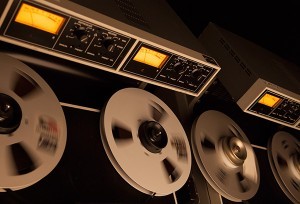
The Art of Doubletracking: A Tape Flanging Demo
As you may have learned from Pete Celi’s recent article in Premier Guitar, many of today’s most common guitar effects (chorus, echo, flanging) were born
Free US Shipping On Orders Over $49
Easy 30-Day Returns
Financing Available Through ![]()
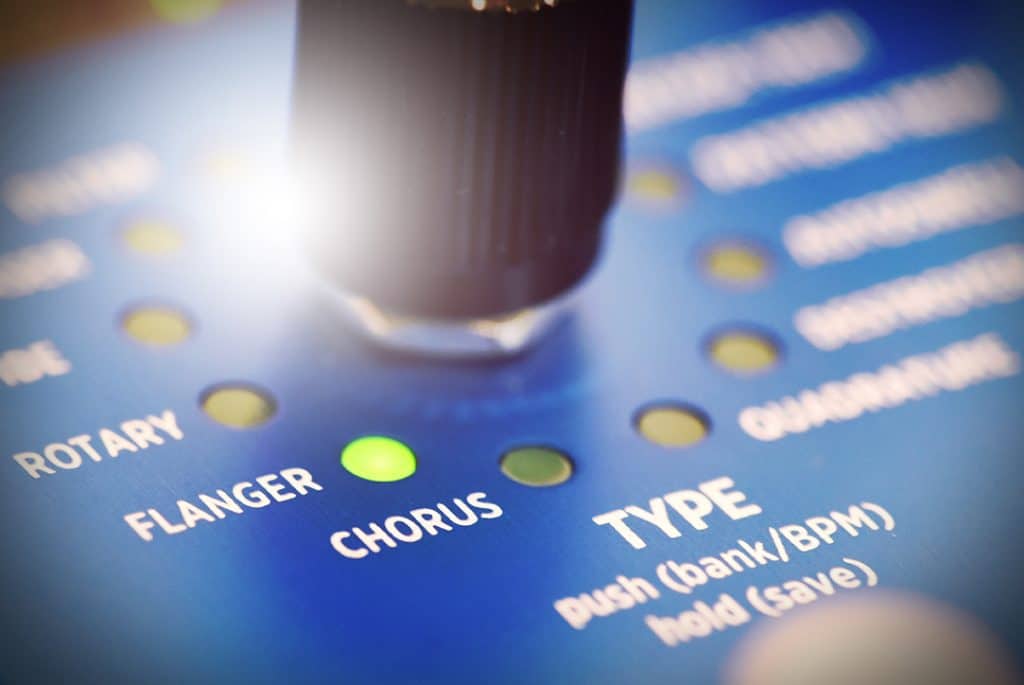
Examples of the flanger effect are easy to find in classic rock. The intro guitar on Rush’s “Spirit of Radio,” the iconic opening riff from Heart’s “Barracuda,” and the breakdown in the middle of “Listen to the Music” by The Doobie Brothers are three famous and memorable uses of the effect. Chances are that anyone who collects guitar pedals long enough will eventually have at least one flanger pedal in their possession.
But how do they work? Basically, whether digital or analog, the flanging effect is created by mixing two identical audio signals, applying a slight delay to one signal, and slightly (and continuously) varying the delay time. Combining two identical audio waveforms with a slight time delay between them results in an interference pattern where the volume level of some frequencies are reduced while the volume of other frequencies are increased.
When displayed visually this appears as a series of peaks and notches resembling a comb, thus earning the name “comb filtering.” Since the delay time is being continuously varied (or swept), we get a swept comb filter, and we hear that now-familiar continuous change in the timbre (the harmonic content of the sound) that we recognize as flanging.
Before anyone had built a pedal called a flanger, the effect had been experimented with in recording studios for quite some time (going all the way back to Les Paul in the 1950s).
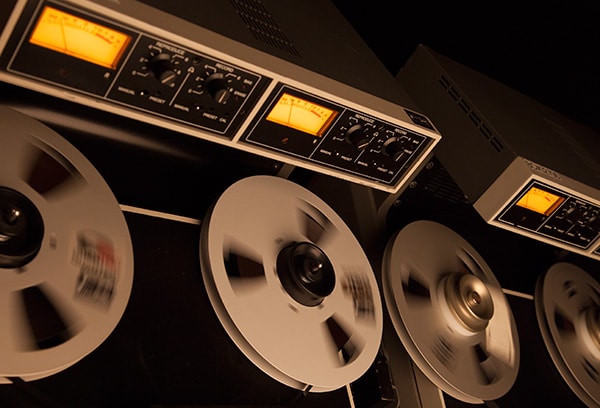
One famous and unmistakable example is in “Gypsy Eyes” from Jimi Hendrix’s 1968 album Electric Ladyland. To achieve the flange effects on the song, the studio engineers (Eddie Kramer and Gary Kellgren) mixed the audio outputs from two tape decks playing an identical recording simultaneously. As the two decks played back, Kramer or Kellgren would gently press a finger against the flange (i.e., the rim) of one of the playback reels to slow it down slightly relative to the other machine, varying the pressure to vary the speed.
Check out the video below to hear some examples of flanging with Mobius.
The flanger and the chorus are both modulation effects that use delay in a similar way. A main difference between the two is that a flanger uses shorter delay times than a chorus. The slightly longer delay times used for the chorus effect do not result in the same comb filtering results as found in flanging.
Another difference is that unlike a flanger, a chorus does not have regeneration (delay feedback). Slightly modulating the delay times in the chorus also slightly modulates the pitch, suggesting the sound of two or more instruments or voices sounding the same pitch very slightly detuned from one another. Of course, with more extreme modulation depth and higher speeds, the chorus effect can venture into wilder territory.
Our Orbit dBucket Flanger and Ola dBucket Chorus and Vibrato both use our handcrafted, processor intensive dBucket algorithm for highly accurate reproduction of every stage of an analog bucket brigade chip. Mobius builds on that and provides six distinct flanger modes, five unique chorus types, along with a host of additional modulation machines.
Each pedal features super low noise, high performance 24-bit 96kHz A/D and D/A converters, 110dB signal to noise ratio, 20Hz to 20kHz frequency response, premium analog front end and output sections, and 32-bit floating point processing.

With Orbit dBucket Flanger, we’ve painstakingly recreated every aspect of some of the greatest vintage analog flangers. To go beyond that, we’ve also added features such as through zero flanging to take you where few have ever ventured before. Our high performance DSP is dedicated entirely to one thing only, delivering the ultimate flanger.
Orbit allows switching between positive, negative and positive/negative feedback. With positive feedback, the wet and dry signals are in phase, producing a jet-like swish when higher REGEN settings are used. Negative Feedback creates ‘hollow’ or ‘watery’ flange sounds. The +/- setting uses a frequency dependent feedback combining elements of both Positive and Negative to create new sonic possibilities.
Orbit also gives you a choice of three LFO (low frequency oscillator) types: logarithmic, for an even-sounding frequency sweep; linear, for a frequency sweep that speeds up as it goes higher and slows down as you go lower, and through zero, which advances the wet signal ahead of the dry signal for dramatic flanging effects unavailable in most flangers.
Learn More About Orbit Buy Now $299

Ola dBucket Chorus and Vibrato actually gives you three effects types: First, Ola offers a traditional single-delay-line chorus using our dBucket algorithm. This chorus type uses a logarithmic LFO type to create a deep chorus that makes a great transition from lush to pulsing as the speed is increased.
Second, there is a Multi type with three individual dBucket delay sections per channel to create a “studio” chorus effect that handles a high wet mix without sounding warbly. Finally, a vibrato mode employs a sinusoidal-type LFO and a single dBucket delay line per channel to capture the essence of the original classic vibrato stomps.
Learn More About Ola Buy Now $299
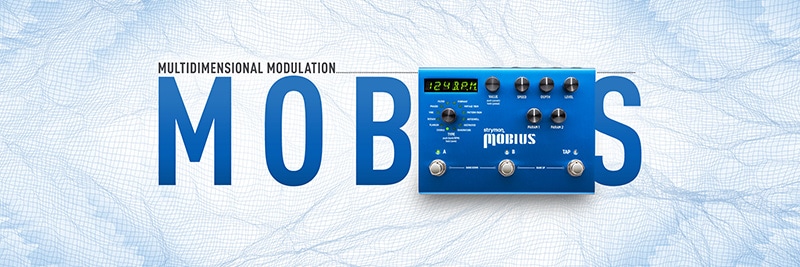
The Mobius Chorus machine features five distinct modes to cover all the classic chorus sounds. dBucket, Multi, and Vibrato all utilize our dBucket variable clock technology for classic analog bucket brigade style chorusing. dBucket utilizes a single LFO while Multi utilizes multiple LFOs simultaneously for a distinctly rich sounding chorus. Vibrato is a pitch modulation effect reminiscent of bucket brigade style pitch modulation effects. The Detune and Digital modes are clean digital chorus effects reminiscent of the rack effects of the ‘80s. Detune applys a “thickening” effect to your signal while Digital is a crystal clear chorusing algorithm.
The Flanger machine within Mobius contains six modes that are designed to deliver the historic catalog of flanging tones with maximum ease of use. Choose from the color-coded Silver, Grey and Black (+ and -) modes for vintage stomp flanger tones, or go through zero back to the days of tape flanging with the Zero+ and Zero- modes. Each separate algorithm uses our dBucket technology at its heart for authentic recreations of classic bucket brigade flangers.
Learn More About Mobius Buy Now $449
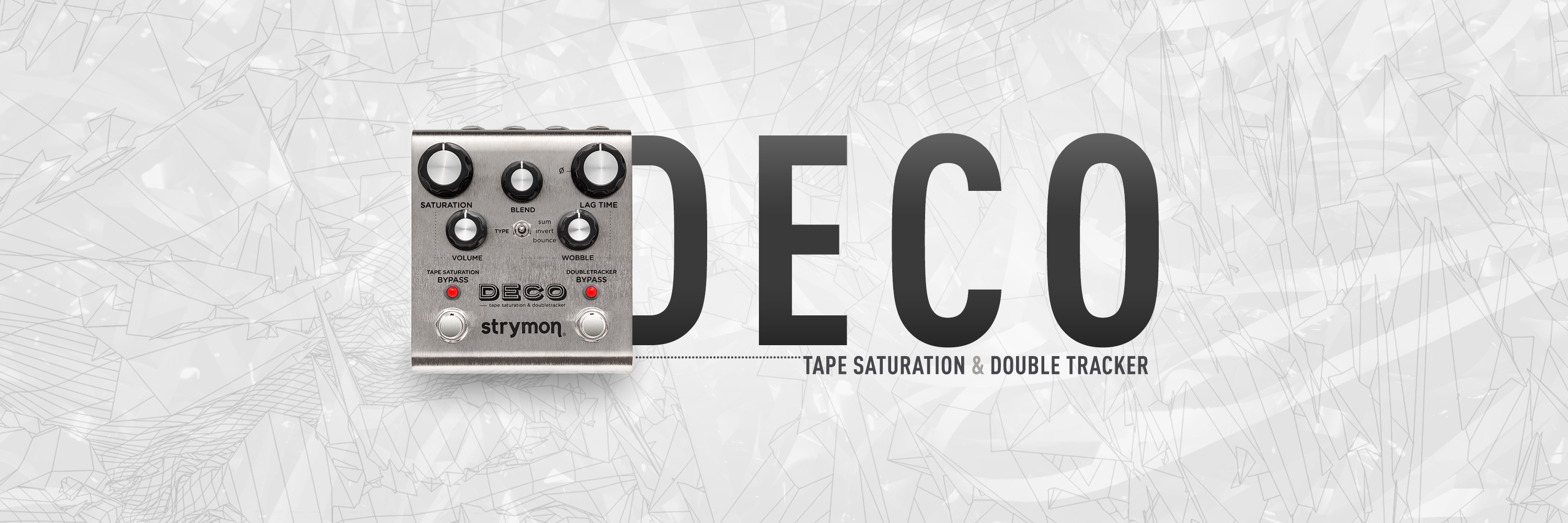
If you like your flanging the old fashioned way—made with two tape decks—then Deco has just the sound you are looking for. Deco is designed to bring vintage tape effects from the earliest recording studios to your pedal board. From warm, luscious tape saturation and compression, to tape flanging and tape chorus, plus doubling and tape echo effects, Deco beautifully and faithfully reproduces just about any effect you could get from two reel-to-reel tape machines. This includes the sought-after and unmistakable sound of tape-based zero-through flanging (both positive and negative).
Since the tape saturation on the first deck can be used with or without the second deck (which allows for flanging, chorus, echo, and delay effects), Deco is perfect for an always-on sweetening effect, adding the perfect amount of tape saturation to your overall sound.
Subscribe to our newsletter to be the first to hear about new Strymon products, artist features, and behind the scenes content!

As you may have learned from Pete Celi’s recent article in Premier Guitar, many of today’s most common guitar effects (chorus, echo, flanging) were born
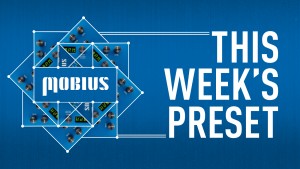
Classic through zero or ‘tape deck’ flanging is showcased here, utilizing the Mobius Flanger machine on the Zero+ mode. By using a distortion pedal before
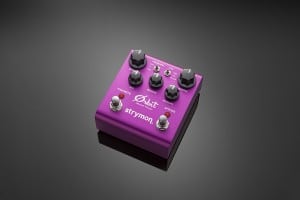
Our very own DSP Engineer and co-founder Pete recently wrote an awesome article on flangers for the September issue of Premier Guitar. It illuminates some
4 Responses
which component makes the flanger sweep? mine doesn’t go fast enough.
Hi, is this on a Strymon pedal? Please email [email protected] and we’re happy to help 🙂
Interesting blog post! I had no idea what a flanger was before reading this, but now I’m curious to try it out. Can’t wait to see how it can enhance my music.